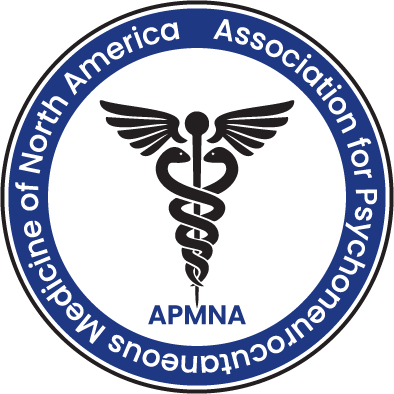As early as 1925, Joseph Klauder, a dermatologist in Philadelphia, wrote in an early text on psychosomatic interrelationships, that “the psychological phase of certain skin disease should not be neglected in treatment.” This was a period when much of the interest in mind and body interaction was taking place in Europe. The interest was pursued largely by psychiatrists, rather than by those in the other medical specialties, and the text in questions, “Emotions and Bodily Change” was edited by Flanders Dunbar, a pioneer in the field, the founder of the American Psychosomatic Society, and wife to the translator of the works of the Austrian psychoanalyst, Wilhelm Reich.
Unfortunately this insight of Dr. Klauder’s fell onto fallow ground, at least among dermatologists, because in 1927, W.T. Sack wrote that “there is scarcely a medical specialty in which the modern teaching concerning the neuroses has found so little application as in dermatology” –andundefinedconsidering the close connection developmentally, anatomically and psychologically between skin and nervous system, the reasons for what we think that to-day we would call “denial,” are surely of speculative interest.
Between the 1930’s and the 1950’s, the period when Freud and many of his colleagues moved from Europe to the United States, there was a burgeoning of interest in the issue of psycho-somatic interactions, and much of the theory that evolved at that time was informed by the psychoanalytic view-point. A number of psychosomatic texts were published, many of which shared the psychoanalytic theory, and many of which also contained sections on dermatology. Obermayer, M.E. , Stokes, J.M., Beerman, H., and Whitlock, F.A. stand out as proponents in this country, while Sultzberger, M.B. continued to poo-pooh the concept, stating quite categorically, in 1940, that there is “no proof for nervousness as casual” in skin conditions.
The topic began to make its way more meaningfully into mainstream practice in the 1970’s and 1980’s, with the publication of monographs such as “Psychophysiologic Aspects of Skin Disease” by Whitlock, FA. in 1976, “Stress and Skin Disease” edited by Emihano Panconesi, in 1984, and “Psychocutaneous Disease” by Koblenzer, CS. in 1987. But despite these publications, the concept psychocutaneous interaction was not taught in Residency Programs, and indeed on presenting an instructive case at a conference in the 1980’s the presenter was publicly deemed “crazy” by a senior member of the faculty who walked out!
Despite this close-mindedness, while work continued in the clinical arena, exciting information was also emerging from the field of neurobiology. In the 1950’s, George Solomon studied what he termed “psychoimmunology,” or the impact of psychological factors in auto-immune diseases such as rheumatoid arthritis, and subsequently in AIDS. More recently, in 1991 Ader, R. and Felton, S. published the first edition of “Psychoneuroimmunology,” a text now in its fourth edition which, given what in the interim we have been learning about the immunological aspects of so many skin disorders, has enabled us to begin to see much more clearly many of the very complex interactions between psyche and soma, as they affect the skin.
During the 1980’s only a very small number of people, psychiatrists and dermatologists in this Country were interested in psychodermatology, and spread as they were across this vast continent, there was little opportunity for comradely interaction. So in 1991 it was determined that a professional group be formed. This indeed took place among the few interested parties, perhaps six or eight in all, at a specially convened meeting at the DFW International AirPort in Dallas. It was determined that it be called the Association for Psychocutaneous Medicine of North America –the A.P.M.N.A. – and that a full day meeting would be held each year on the day preceding the Annual Meeting of the American Academy of Dermatology.
Although these meetings have taken place as planned and interesting papers have been given, over all these years the attendance level has remained essentially stationary. Similarly, although currently there are few researchers in this very important aspect of our field, research is limited by lack of funds while, much to our distress, teaching of psychocutaneous issues does not appear yet to be a part of the standard syllabus, and a few programs run a multispecialty clinic. Even such obviously important issues in a way that the patient can accept, or the building of a trusting relationship, seem often to be absent. A.P.M.N.A has recently gained momentum in last few years and the number of attendees in its annual meeting have increased. Few years ago a website for A.P.M.N.A was launched as www.psychodermatology.us, which is frequently visited by physicians and patients, of psychocutaneous disorders, all around the world. The associate membership in A.P.M.N.A for international colleagues have reached to all corners of the world. Currently there are established Psychodermatology clinics in Rochester, NY, New York, NY, Tampa, FL, Saginaw, MI. Madison, WI, Kansas City, KS and San Francisco, CA. Besides that there are several physicians, who have interest in Psychodermatology, and they are also members of A.P.M.N.A, are treating patients with psychocutaneous disorders in many of the cities of United States.
Interestingly in Europe acceptance of psychodermatology as a valid part of the dermatology spectrum seems to have had a very different history. The European Society for Dermatology and Psychiatry (E.S.D.a.P.) was formed one year after the A.P.M.N.A., but not only is it in itself very active, there are also very active societies in many individual European countries. Indeed, psychodermatology appears to be an accepted part of the curriculum, in many countries, important clinical, as well as neuropsychiatric research is taking place, different forms of psychotherapy are practiced, and interesting publications are regularly in the current literature.
Similarly, there are regularly psychodermatology symposia at International Dermatology Meetings and it is our very great hope that psychodermatology as an integral sub-specialty of dermatology will shortly gain a wider acceptance also here in the United States, assisted in part by the activities of the A.P.M.N.A.


